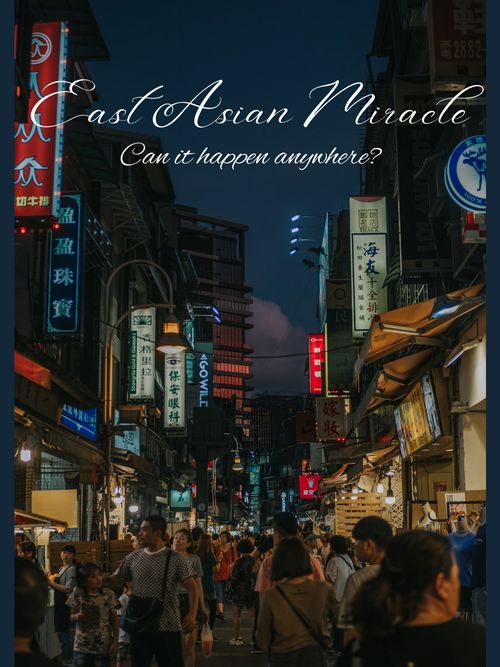Could the “East Asian Miracle” work anywhere?
Feb 07, 2022 · 2 mins read
0
Share

The East Asian Miracle is the name given to the pronounced growth of East Asian economies in the post-Second World War era. The economic advancement of these countries seemed to defy both liberal modernization theory and development theory.
Save
Share
In a sense, both theories combined together- the neoliberal model of regional dynamism, with the national developmental state- to create the East Asian Miracle. Its occurrence suggests that culture and historical background also influence the development trajectory of a country.
Save
Share
Domestic institutions: The state heavily invested in education, and assisted the market. It provided the initial capital to promising industries/sectors. The stable financial institutions it set up encouraged savings and investment, creating a steady line of credit.
Save
Share
Foreign linkages: Kaname Akamatsu’s flying geese paradigm (FGP) explains the method for East Asia to “catch up” with the West through the “Import-production-export (M-P-E) sequence.” Countries that initially import most of their goods, slowly start producing them.
Save
Share
After fulfilling domestic demand they start exporting the surplus. The sequence also witnesses sectoral shifts of production from primary and then consumer goods to capital goods. Production shifts from advanced nations to developing ones.
Save
Share
The initial capital came from the regional leader through Foreign Direct Investment (FDI). Japan’s investment propelled the whole region forward. As the other countries in the region start going through the MPE sequence, Japan moved to other more advanced industries and sectors.
Save
Share
The first-tier of the Asian Miracle are well-known success stories. South Korea, Taiwan, Hong Kong, and Singapore (commonly known as the Asian Tigers) developed into high-income economies by the 21st century.
Save
Share
But the second-tier, which includes Indonesia, Malaysia and Thailand, faced more hurdles, which displays the failure of FGP. Speculative attacks on the Thai currency triggered an economic crisis in Thailand in 1997 which in turn affected the regional grouping.
Save
Share
Sometimes the developmental state’s promotion of a business-friendly environment through stability led to the propping up of authoritarian governments. Additionally, a close relationship between the state and the business sector led to the entrenchment of corruption.
Save
Share
Bottom Line. The East Asian Miracle displays practical alternative to ideology-infused liberal and socialist models of development. But is such a method possible for all countries, or is it a feature of a particular moment in history, unique to a set of “miracle” Asian countries?
Save
Share
0